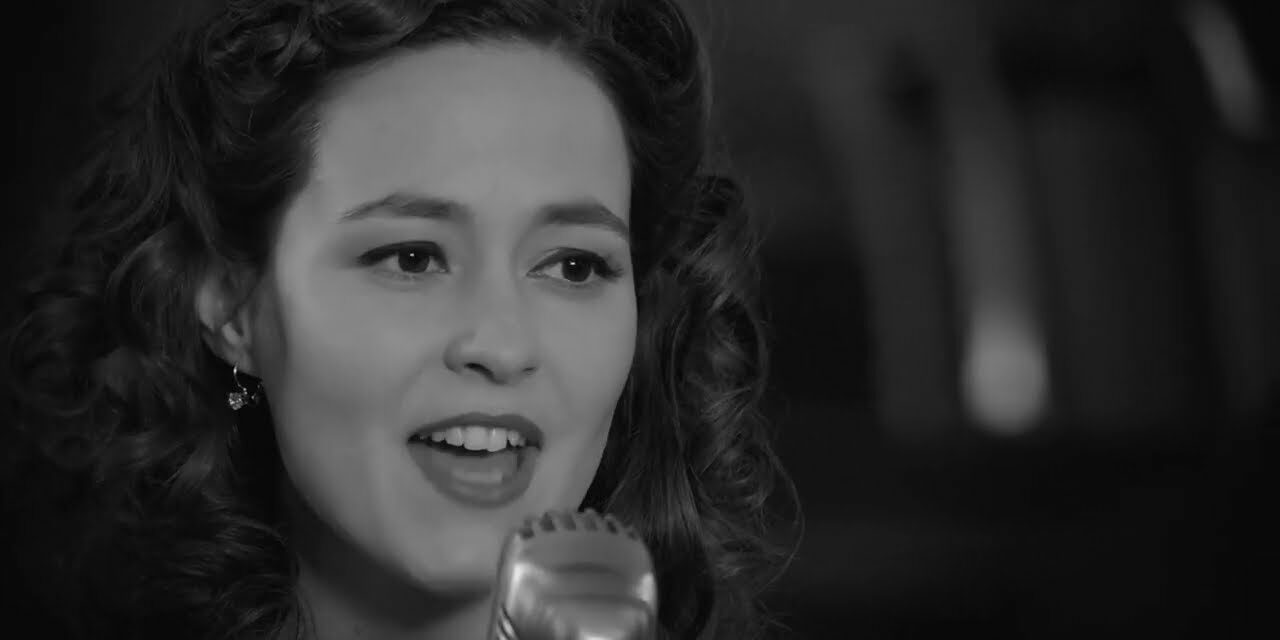In the eyes of the authorities, these young people embodied the inverse of communism, the enemy that must be liquidated at any cost.
The prize-winner welcomed the visitors of the Hungarian Motion Picture Festival held in Veszprém over the weekend. The award for the best feature film went to Ádám Tősér's Blokád and it also won six more nominations out of the fourteen.
The best director Magasságy és abyssék , and the award for the best TV movie went to László Vitézy The Singer .
Imre Kónya about Blockade: This film portrays the real Árpád Göncz
The tragic story of national team footballer Sándor Szűcs and dance singer Erzsi Kovács is not unknown in the Hungarian film world. In 2005, Béla Szobololits made a documentary film about the couple ensnared by the Ávós. Now a fictional TV play has been made from the story with Vivianne Bánovits in the title role, Péter Herczegh and József Szarvas in the main roles. The young actress told Petőfi TV that she was deeply moved by the portrayal, that she really suffered a lot in connection with portraying the character. As a young man, he simply couldn't believe that the communist system was so cruel.
He was cruel though
Stalin said that there was no need to worry much about Hungary, the Rákos would take care of that. Although the Generalissimo didn't like the little bald dwarf (similar to a dwarf, but even more evil), he used it well as a tool. The Hungarian party general secretary mastered the monster's Georgian human skinning techniques.
The gnome Rákosi, smeared with all hair, was happy to drag the educated, young and well-sporting Hungarian boys with a handsome male physique. This is how one of the biggest XX. also Attila Gérecz, a 19th-century poet and punk, whose companions were partly executed in 1950, and partly sentenced together with him to a long, severe prison sentence. The mother of the martyr-poet - who was shot dead in 1956 - remembers them like this:
"They were ex-Ludovician, military school, university students, from good families, well-bred, solid, sensible and educated young people. About 7-8 boys in total. He met with them at least once a day (Gérecz - ed.). Walking, sometimes forming a group, they stopped at the corner of Szondi utca, Bajza utca, Andrássy út, arguing, talking and laughing. All of them had something to say about life, family, studies or girls."
In the eyes of the authorities, these young people embodied the inverse of communism, the enemy that must be liquidated at any cost.
In a standard concept lawsuit, they do. On October 24, 1956, five-husband István Hegedűs, who appeared as a man on the old twenty-forint banknote, also met a fatal fate. He was machine-gunned from an ÁVH truck. Many believe that he was deliberately murdered by the Party because he refused the position of flag bearer for the Melbourne Olympics.
The above cases also show the circumstances in which the love story of the famous singer and the legendary football player took place. Compared to the excellent work of documentarian Szobolits, Vitézy's film perhaps helps to bring the human and political relations of that time closer to the world of today's young people.
According to the story of the fictional film, "Vince is a talented soccer player, a member of the national team. In addition to professional success, he found love, dating Vali, the beautiful young singer of Astoria. When the ÁVH apparatus - afraid that successful soccer players will leave the country - wants to set an example, Vince is considered the most suitable candidate. With the help of his recruited close friends and faithful police officers, they persuade the young man to see no other way out than desertion. He manages to convince Vali of this as well, and with the help of a people smuggler, they start for the border."
Of course it's a trap, they get caught and even Ferenc Puskás tries to save the excellent footballer, to no avail.
He is tortured and executed in prison, setting an example for elite athletes of what awaits those who dare to defect.
The morality of socialism did not allow married people to fall in love with each other. A commenter for the Szobolits film wrote about this only that
"Their love began in 1950, which the Pharisaic authorities did not look favorably on from the beginning, as incompatible with socialist morality - I do not understand this sentence. I know an aunt who, before '56, was a typist at the ÁVÓ and later at the police, and she said that both institutions were a ready-made couple, the comrades poked each other's noses and mouths at work. Well, he just knows."
Erzsi Kovács, the singer, is released in 1954 after serving her prison sentence. Later, he returned to the world of music with his talent, as the Kádárs – referring to the degeneration of the Rákos, but bravely hanging children in the process – rehabilitated some well-known and well-liked, popular artists and public figures, so to speak. Of course, constantly watching and watching them. From this, the artist flees to work abroad, we can see her again after the regime change, but by then only the older generation remembered her. Until the regime change and for a long time after, nobody remembered the footballer Sándor Szűcs.
Perhaps only Erzsi Kovács, who later often performed on the somewhat shabby Budapest TV.
I hope that László Vitézi's film, with its young protagonists and renowned cast, and by presenting a tragic love drama that happened in reality, makes it clear to young people what an amazing terror their grandparents' age had to go through. Because they should know that the basic nature of communism/globalism will never change.
In possession of power, they want total control over thoughts and souls. Any time, any price.
"Where there is tyranny, there is tyranny, everyone is an eye in the chain," writes Illyés, and like all basic truths, this is a saying that spans the ages.
It is therefore no coincidence that the festival jury saw Vitézy's instructive film as the best at the Veszprém film festival.
Featured Image: YouTube / Screenshot












